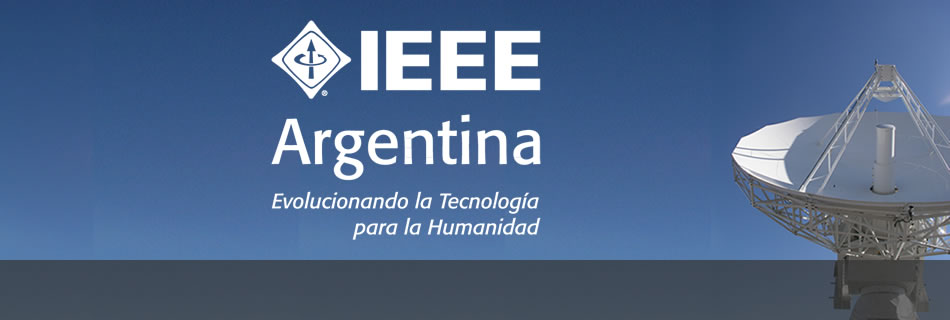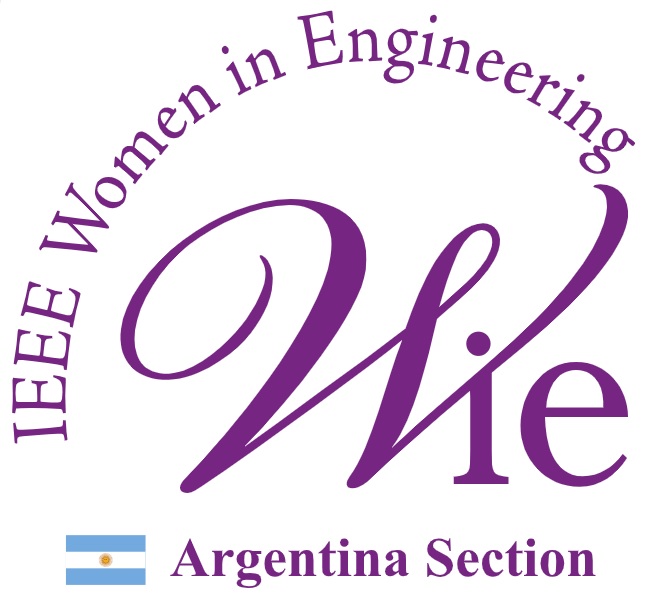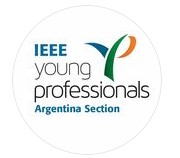Noticias y Actividades
Publicado el 19/05/2006
 Conferencias del Dr. J. Fernando Naveda
Conferencias del Dr. J. Fernando Naveda
"The Certified Development Professional"
Martes 30 de mayo - UTN FRBA
"Architectural Design: Designing Before Design"
Miércoles 31 de mayo - UCA
El Capítulo Argentino de la IEEE Computer Society, con el apoyo del Programa de Conferencistas Distinguidos de la Sociedad, la Universidad Tecnológica Nacional Facultad Regional Buenos Aires y la Universidad Católica Argentina, invitan a las Conferencias que dictará el Dr. J. Fernando Naveda, según el detalle siguiente.
El acceso a las mismas es libre y sin cargo, con inscripción previa, y se dictarán en idioma español.
Breve biografía del expositor
Fernando Naveda is the Chair of the Department of Software Engineering at the Rochester Institute of Technology (RIT), Rochester,
NY, USA. In 1979 he earned a bachelor's degree in Computing Systems Engineering from "Instituto Tecnológico y de
Estudios Superiores de Monterrey," Monterrey, NL, Mexico. In 1986 he earned a doctoral degree in Computer and Information
Sciences from the department of Computer Science at the University of Minnesota, Twin Cities, USA.
From 1986 through 1987 he was a faculty member with the department of Computer Science at the University of Kansas, Lawrence.
Later in 1987 he joined the department of Computing Sciences at the University of Scranton, Scranton PA, where he developed and
directed that university's Masters program in Software Engineering. He was a visiting scientist with the Software Engineering
Institute in 1990. Between 1991 and 1993 he was a visiting scientist with the department of Computer Science at the Naval
Postgraduate School, Monterey, California where he worked in the Computer Aided Prototyping System.
Dr. Naveda joined RIT's department of Computer Science in 1993 where he was directly involved in the development of the
baccalaureate degree in Software Engineering, the first program of its kind in The United States.
He has played a leading role in the IEEE Computer Society's effort to implement the Certified Software Development Professional
(CSDP) exam. He has also helped with the implementation of the CSDP on-line course.
His most recent research interests includes document abstraction and representation with XEROX Corp. Other interests include
software engineering education, software architectures, software design, and software process.
2.1. --- Conferencia "The Certified Development Professional"
Expositor: Fernando Naveda
Fecha: Martes 30 de mayo, de 18:30 a 20:30
Lugar: Aula Magna de la UTN-FRBA,
Medrano 951, Buenos Aires.
Idioma: Español
Inscripción: Por e-mail a sec.argentina@ieee.org citando
'Naveda, UTN, mayo 30', o por teléfono a IEEE/CICOMRA (011) 4325 8839. Esta actividad no es arancelada.
Abstract
New innovations, new developments, and new methods of implementation are creating the environment in which software professionals
must function. The challenge facing today's computing professionals is to keep up with technical changes and best practices in
order to create state-of-the art software. Professionals must be educated about best practices in requirements, design,
development and test and demonstrate a high level of competence.
By recognizing the importance of continuing education in today's software development environment, the IEEE Computer
Society created the CSDP program. The CSDP examination is designed to measure an individual's mastery of the fundamental knowledge
required to perform the functions of an experienced software engineer. The CSDP program helps assess an individual's software
engineering knowledge and skills. Unlike vendor certifications, the CSDP is a comprehensive, professional certification that
incorporates four critical components: an examination demonstrating mastery of a body of knowledge, extensive experience in
relevant knowledge areas, continuing professional education, and review of a code of ethics.
The CSDP is the only certification for computer professionals that carries the brand, reputation, and standards of the IEEE
Computer Society. Established in 1946, the IEEE Computer Society is the leading professional association for computing
professionals worldwide. Today there are nearly 100,000 society members in 158 countries. The society is the largest technical
society within IEEE, the Institute of Electrical and Electronics Engineers, Inc.
There's no better time than today to complete the CSDP examination application and discover the IEEE Computer Society's
commitment to your lifelong learning. The exam is currently administrated at sites located in the USA, Canada, India, China,
Ireland, Hungary, Japan, Russia and Brazil. The IEEE Computer Society is interested in expanding its worldwide exam site network
and is considering Spain among other countries.
In this talk we discuss relevant issues and overall development and content of the CSDP to help the audience gain a better
understanding of the exam and related activities currently underway at the Computer Society.
2.2. --- Conferencia "Architectural Design: Designing Before Design"
Expositor: Fernando Naveda
Fecha: Miércoles 31 de mayo, de 18:30 a 20:30
Lugar: Universidad Católica Argentina, . Edificio Santo Tomás Moro, Piso 4, Aula 401
Avda. A. Moreau de Justo 1400, Puerto Madero, Buenos Aires.
Idioma: Español
Inscripción: Por e-mail a sec.argentina@ieee.org citando
'Naveda, UCA, mayo 31', o por teléfono a IEEE/CICOMRA (011) 4325 8839. Esta actividad no es arancelada.
Abstract
Over the last 25 years, the software industry has experienced a shift in focus from programming-in-the-small to
programming-in-the-large. Indeed, the 1970s were characterized by attention to program-level details. Programming methodologies
and languages were invented that captured our interest and understanding of (by today's standards) relatively small programs.
During the 1980s and early 1990s our attention shifted from the very concrete to the more abstract and, again, programming
languages and methodologies were developed to capture that interest. Thus Object-Oriented methodologies and languages became
fashionable. It is largely due to the popularity of OO languages that design patterns were finally documented and catalogued.
Although these patterns had been in use for many years and in contexts other than OO technology, it was object-oriented
programming languages what made it possible to capture their properties in a concrete-enough format so as to make them easier to
communicate to and be digested by software professionals.
During the 1990s we shifted our interest once more and focused on architectural styles. Unlike design patterns, architectural
styles are even more abstract and it is not practical to capture their properties in a specific programming language. In fact,
there is not even an agreement on a language for documenting architectural designs, let alone documenting styles. The software
engineer is constantly challenged by non-trivial design decisions as she tries to balance between different architectural
attributes of the system well before the fist line of code is written. As it turns out, some of these attributes can be studied
while the architect is still thinking about the software system, even before she starts thinking in more tangible terms like
objects, or even design patterns. Other attributes however, cannot be discerned at design time but rather at later stages in the
development process.
In this talk we discuss software architectural design as it relates to software quality attributes. We classify
attributes that are discernible during the architectural stage as well as during later stages of the software development process.
*** NOTA: Las conferencias se dictarán en Español, pero preferimos publicar los resúmenes originales en Inglés provistos por el expositor.
Destacados











